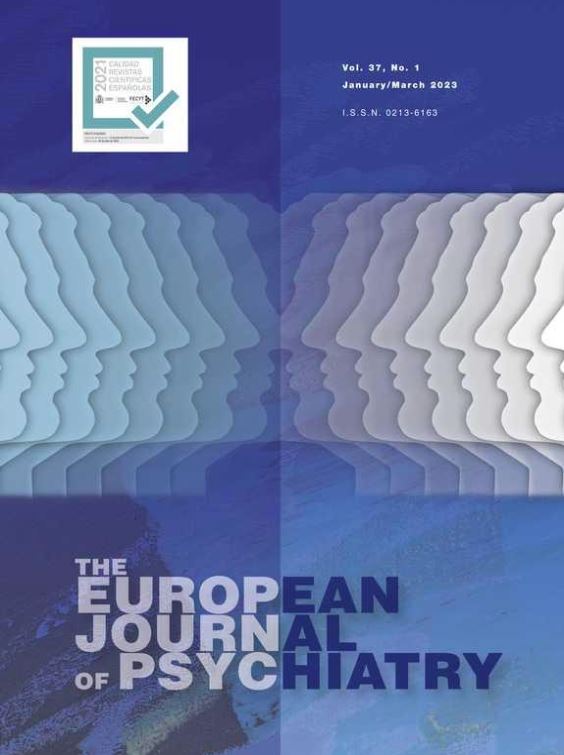At present, achieving functionality has become the therapeutic goal in most patients with schizophrenia, and several maintenance treatment options are available.1 However, there are unmet needs that must be tackled, including poor treatment adherence or relapses.2 Aripiprazole is a well-known molecule that has been effectively used in the treatment of schizophrenia since 2004.2 Various oral presentations of the drug, together with 400 mg aripiprazole once-monthly (AOM) and 7.5 mg IM injectable formulations, have been available for some time. The results of the PK profile of a new, longer-acting injectable of 960 mg aripiprazole in a ready-to-use (RTU) formulation (Ari2MRTU960) for administration every 2 months (ClinicalTrials.gov identifier: NCT04030143) have recently been published.3,4 As clinicians with experience in the management of people with schizophrenia, we have assessed the data of this pharmacokinetic (PK) bridging study and their applicability, in order to identify the potential benefits of this new formulation and aspects that should be addressed in the short-medium term. To this end, we completed a 40-item questionnaire as individual pre-work, and the aggregated answers were subsequently discussed in a scientific meeting.
We believe that the basis of this pharmacokinetic bridging study, as well as several issues related to its design and outcomes, should be clarified to facilitate interpretation by clinicians. Firstly, a phase 3 study may be not required by regulatory agencies, as Ari2MRTU960 is the same molecule as AOM in a different formulation, and the latter has already undergone multiple phase 3 trials and real-life studies and shown good efficacy, effectiveness, and safety results in the post-marketing period.5 The aim, therefore, of the above-mentioned PK study was to compare the PK, safety, and tolerability of the new Ari2MRTU960 formulation versus AOM. Once-monthly IM aripiprazole has already shown consistent drug plasma concentrations above the reported threshold (Cmin ≥ 95 ng/mL) which are in turn associated with an almost 4.5-fold reduction in relapses.4 With its comparable PK profile, the 2-monthly formulation was expected to do the same, so efficacy was also assessed as a secondary objective within the study. The ethnic composition of the study was different to that of our own setting in Spain, but this was not expected to necessarily interfere with the applicability of Ari2MRTU960 in clinical practice, as the study shows a PK, tolerability, safety, and efficacy profile consistent with that of AOM3,4 (Table 1). Secondary clinical outcomes assessed in the study showed that patients receiving Ari2MRTU960 remained clinically stable throughout the 32 weeks, and the experience and previous data supporting the clinical value of the molecule itself foster confidence in this formulation.5
Comparison between 2-month ready-to-use aripiprazole 960 mg (Ari2MRTU960) and aripiprazole once-monthly 400 mg (AOM400).
| Ari2MRTU960 | AOM400 | |
|---|---|---|
| Molecule | aripiprazole | aripiprazole |
| Injection site | gluteal | gluteal or deltoid muscle |
| Plasma concentration on the last day of the dosing interval, ng/mL, mean (SD) | C56 = 250 (128) | C28 = 257 (162) |
| Cmax, ng/mL, mean (SD) | 342 (157) | 344 (212) |
| AUC0–56, day⋅ng/mL | 14,700 (7460) | – |
| AUC0–28, day⋅ng/mL | 7840 (5170) | 7190 (3470) Eighth dose |
| Discontinuation rate due to AE in the study NCT04030143 | 3.3 % (n = 3) | 7.5 % (n = 7) |
| AE during study NCT04030143 | 67.4 % (n = 62) | 64.5 % (n = 60) |
AE, adverse events; AUC, area under the curve; SD, standard deviation.
We therefore believe that Ari2MRTU960 may provide relevant additional benefits in the landscape of maintenance schizophrenia management. It is the only extended-release D2 partial agonist antipsychotic to demonstrate sustained efficacy for 2 months with minimal fluctuation of drug plasma concentration levels and a comparable safety and efficacy profile to AOM.3,4 We presume this will positively impact on treatment adherence, as has previously occurred with other antipsychotic drugs, because a lower administration frequency is more convenient for patients, and improved therapeutic adherence should in turn help prevent relapses. The reduced burden of such a treatment schedule may also offer potential advantages for healthcare professionals. A 2-month frequency may also be optimal in terms of patient visits because the drug administration and follow-up visit can occur at the same time, achieving regular follow-up while avoiding additional visits for the patient. Furthermore, since many patients might already be receiving treatment with the previous aripiprazole formulations, several treatment initiation options could facilitate initiation of Ari2MRTU960. This would optimize the therapeutic approach by permitting individualization based on each patient´s case or circumstances.
In conclusion, Ari2MRTU960 may be an advance towards regaining functionality as a therapeutic objective with respect to the previously available options: patient stability can be more easily maintained, so any patient with schizophrenia who is stable and tolerates aripiprazole well can benefit from this new formulation. Persistence and therapeutic adherence studies with Ari2MRTU960 should be conducted in the near future.





